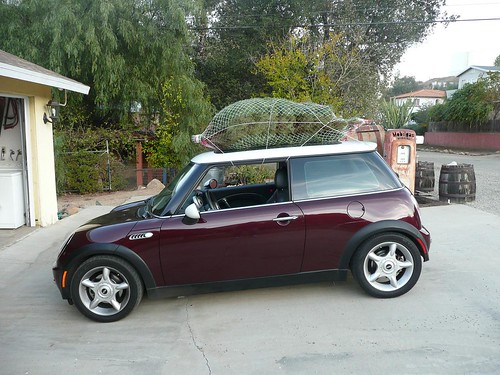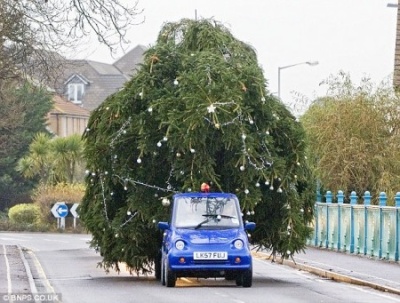There are a lot of animals that only seem to come around in the winter. In my native North Dakota, it was snow buntings (the original "snow birds") and snowy owls. Here in Pennsylvania, the slate-colored juncos only appear at my feeders when there is snow on the ground. I have noticed the appearance of an interesting plant though, a presence that is far more...sinister.
This plant is a parasite, feeding on helpless and unsuspecting victims, who only want to get in the holiday spirit. Now I know what many of you are thinking; you're thinking that I'm talking about mistletoe. While it's true that mistletoe is indeed a parasite that sucks life out of its hosts, I'm talking about a plant that targets us. I found a picture of one online...here let me show you:
Yes, it's the dreaded Christmas suckers: the Parasitic Pine (Festivus pinus), the Sucking Spruce (Festivus picea), and the Feeding Fir ( Festivus abies).
This family of trees all share the same feeding characteristics. Some attach to their host using tendrils resembling twine, and others like the one above use a strong spider-like webbing. You'll notice that the trees assume an aerodynamic pose before attaching by drawing in their branches and orienting their bodies so that they face trunk-first on their host. The attachment through tendrils and/or webbing, coupled with an aerodynamic pose allow the Christmas suckers to feed while riding their hosts at speeds in excess of 55 miles per hour (where did you think those extra miles per gallon where going, hmmm?). Once inside our homes, we can only prevent them from making us their next meal by making offerings on and beneath their boughs.
This family should be safe this year...I think.
I found some more pictures of parasitized vehicles that I want to share in order to educate you on how far-reaching this infestation is. Here we can see a close up of the twine-like tendrils, attaching the Christmas sucker to its host.
Parasites are only successful if they live off of a host without killing it. Otherwise the parasite threatens its own existence by eliminating its food supply. Here we can see that the Christmas sucker selects its host by finding one of comparable size to itself.
However, sometimes the trees get a little over zealous.
In 2010, this hefty fellow was not only able to find a suitable host, but was then transported to the White House. The White House, people!
In this photo, a Christmas sucker has resorted to parasitizing a small child. The horror!!
As you can see from the official watermark, I got this from a classified file
in the Department of Agriculture called "Shutterstock"
This holiday season, keep a keen eye out for the Christmas sucker. They may look innocent, but that's what they want you to think. But as long as we support one another by giving each other offerings for our trees (often called a "gift exchange") we can make it through this holiday season...alive.





Us Jewish folks just have to worry about lighting the correct amount of candles each night of our holiday celebration. Oh. and eatting potato latkes with applesauce and those yummy gold chocolate coin things too. Glad we do not have to worry about poisonous plants, trees or parasites.
ReplyDeleteOh yes indeed Jeff, you are among the fortunate who have not succumbed to the piney fresh siren song of the Christmas sucker. Just don't go getting greedy with those gold coins. Remember, they aren't an acceptable form of currency in Las Vegas or Reno.
ReplyDeleteI used to have to appease my Christmas Sucker in years past, but recently I purchased a petroleum-based facsimile. I breathe easier at night not listening for the rustle of resinous tendrils, hungry for unsuspecting cats. Also, Ms. Nature Geek, you didn't address the Christmas Sucker's Phoenix-like tendencies to burst into horrifying flames at random intervals. *shudder*
ReplyDelete